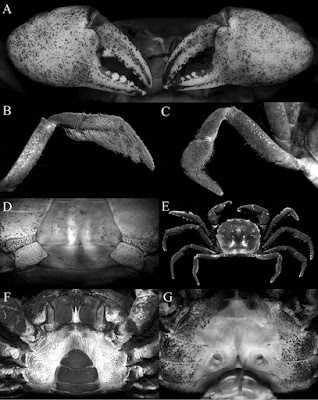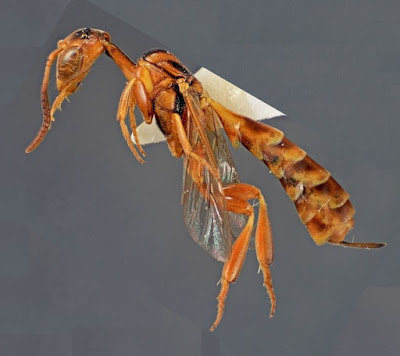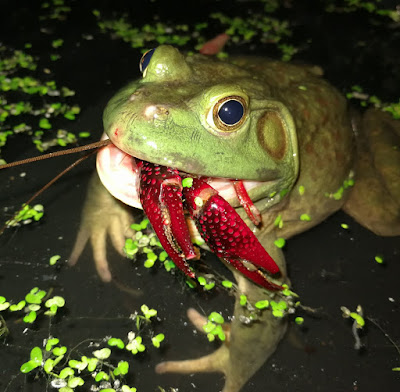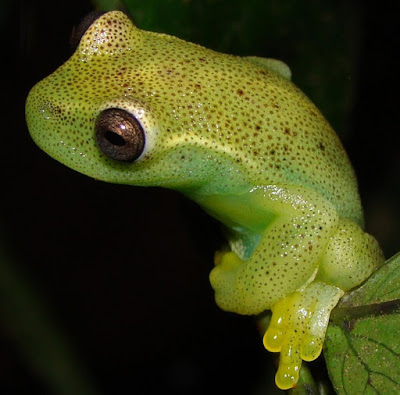[Most Recent Entries] [Calendar View]
Tuesday, February 20th, 2018
| Time | Event | ||||
| 6:49a | [Crustacea • 2018] Australocarcinus insperatus • A New Species of Trogloplacine Crab of the Genus Australocarcinus Davie, 1988 (Brachyura, Chasmocarcinidae) from A Freshwater Stream in Mahé, Seychelles
Abstract A new species of freshwater chasmocarcinid crab, Australocarcinus insperatus sp. n., is described from the Seychelles Islands in the Indian Ocean. This is the first record of the genus and the subfamily Trogloplacinae Guinot, 1986, from the Indian Ocean, with all other members previously recorded from Australia, New Britain, New Caledonia, and Palau in the Pacific Ocean. The disjunct distribution of Australocarcinus is unexpected considering all trogoplacines are believed to practice direct development, lacking free-swimming larval stages. The new species is morphologically most similar to A. riparius Davie, 1988, from Queensland, Australia, but can be distinguished from its three congeners on the basis of the structures of its carapace, ambulatory legs and male first gonopod. Keywords: Chasmocarcinidae, freshwater, Indian Ocean, new species, Trogloplacinae, taxonomy Systematics Family Chasmocarcinidae Serène, 1964 Subfamily Trogloplacinae Guinot, 1986 Genus Australocarcinus Davie, 1988 Type species: Australocarcinus riparius Davie, 1988, by original designation. Australocarcinus insperatus sp. n. Material examined: Holotype: male (10.7 × 8.6 mm) (ZRC 2017.1072), in shallow stream, ca. 800 m from sea, about 2 km south-southeast of international airport, Mahé, Seychelles, coll. SR Daniels, May 2010. Paratypes: 1 male (8.5 × 7.2 mm), 1 female (9.5 × 7.8 mm) (ZRC 2017.1073), same data as holotype. Diagnosis: Carapace subquadrate, front weakly bilobed, with shallow median concavity (Fig. 1A, B); dorsal surface gently convex (Fig. 1F); dorsal surfaces and margins covered with short uneven tomentum (Fig. 1A, B); anterolateral margins arcuate, with four low teeth: first widest with gently sinuous margin, second lobiform, third wide, fourth (at junction of antero- and posterolateral margins) dentate, directed laterally, protruding beyond margin (Fig. 1B). Posterolateral margin converging towards gently convex posterior carapace margin (Fig. 1B). Epistome compressed, posterior margin with distinct triangular median lobe with median fissure, lateral margins gently sinuous (Fig. 1G). Eye peduncle completely filling orbit, relatively short, mobile; cornea distinct, pigmented (Fig. 1B, F). Third maxillipeds leaving gap when closed; merus quadrate, anteroexternal angle auriculiform; ischium quadrate, slightly longer than merus with very shallow median sulcus (Fig. 1C, D). Chelipeds subequal, relatively stouter in males (Figs 1A, 2E); cutting margins of both chelae with distinct teeth in both sexes, base of fingers with tuft of stiff setae; proximal part of dactylus of right chela with large, triangular tooth directed towards palm (Fig. 2A); ventral surface of cheliped merus with tubercles. Ambulatory legs moderately short; meri unarmed but setose to varying degrees; P2 carpus, propodus and dactylus with very long coarse setae which obscures margins (Figs 1A, 2B); P3–P5 propodus and dactylus setose but setae shorter than on P5 (Fig. 2C); P5 dactylus straight (Fig. 2C). Thoracic sternites 1, 2 fused, broadly triangular, short; separated from sternite 3 by sinuous groove; sternites 3, 4 fused, relatively broad (Fig. 1D). Male pleon with lateral margins of somite 6 and fused somites 3‒5 gently sinuous; telson slightly longer than broad (Fig. 1D, E). Sterno-pleonal cavity of male deep, press-button for pleonal holding small, short tubercle posterior to thoracic sternal suture 4/5 near edge of sterno-pleonal cavity. Male thoracic sternite 8 short, rectangular; supplementary plate narrow, wider along outer part (Figs 1E, 2D). G1 stout; basal part truncate; distal part cylindrical, with rounded tip, covered with short spinules (Fig. 3A–D). G2 prominently longer than G1, basal segment curved; distal segment slightly longer than basal segment, apex cup-like (Fig. 3E, F). Somites of female pleon with slightly convex lateral margins; telson wider than long (Fig. 2F). Sterno-pleonal cavity of female moderately deep, with large vulvae distinctly separated from each other, covering most of thoracic sternite 5, ovate, with low raised lip on outer margin, opening slit-like (Fig. 2G). Etymology: From the Latin “insperatus” for “unforeseen”, alluding to the unexpected discovery of a species of Australocarcinus in the western Indian Ocean. Peter K. L. Ng and Savel R. Daniels. 2018. A New Species of Trogloplacine Crab of the Genus Australocarcinus Davie, 1988 from A Freshwater Stream in Mahé, Seychelles (Crustacea, Brachyura, Chasmocarcinidae). ZooKeys. 738; 27-35. DOI: 10.3897/zookeys.738.23708 | ||||
| 1:03p | [Entomology • 2018] Hyptiogaster arafura • A New Species of the Endemic Australian Genus Hyptiogaster Kieffer (Hymenoptera: Gasteruptiidae)
Abstract Hyptiogaster arafura sp. nov. is described from Arafura Swamp, Northern Territory, Australia, as the eleventh species of Hyptiogaster Kieffer (Hymenoptera: Gasteruptiidae). A revised diagnosis of Hyptiogaster is given based on the new species.
Ben A. Parslow and John T. Jennings. 2018. A New Species of the Endemic Australian Genus Hyptiogaster Kieffer (Hymenoptera: Gasteruptiidae). Zootaxa. 4379(1); 145–150. DOI: 10.11646/zootaxa.4379.1.11 The 11th species of an endemic Australian wasp genus phy.so/438251045 via @physorg_com | ||||
| 2:22p | [Ecology / Invasive Species • 2018] More Invaders Do Not Result in Heavier Impacts: The Effects of Non-native Bullfrogs on Native Anurans are Mitigated by High Densities of Non-native Crayfish
Abstract 1. With accelerating species introductions in an era of globalization, co-occurring alien species have become increasingly common. Understanding the combined ecological impacts of multiple invaders is not only crucial for wildlife managers attempting to ameliorate biodiversity loss, but also provides key insights into invasion success and species coexistence mechanisms in natural ecosystems. Compared with much attentions given to single-invader impacts, little is known about the impacts of multiple co-occurring invaders. 2. The American bullfrog (Lithobates catesbeianus = Rana catesbeiana) and the red swamp crayfish (Procambarus clarkii) are two aquatic invasive species in many different areas of the globe. They coexist with native anurans in a variety of permanent lentic waters, which provide an ideal model system to explore the combined effects of multiple invaders from different trophic levels on native species. 3. Based on a global diet analysis covering 34 native and invasive bullfrog populations, and data from 10-year field surveys across 157 water bodies in the Zhoushan Archipelago, China, we observed a reduced impact of bullfrogs on native anurans at high crayfish densities when the two invaders co-occurred. 4. The global diet analysis showed that crayfish occurrence reduced the number of native anuran prey consumed by bullfrogs in both native and invasive populations. After accounting for pseudoreplication of different observations among water bodies, islands, and survey time, model averaging analyses based on GLMMs showed a negative relationship between bullfrog density and native anuran densities for field observations of invasive bullfrogs alone and co-invaded observations with low crayfish density. However, this negative relationship disappeared when the two invaders co-occurred with high crayfish density. Structural equation modelling (SEM) analyses further validated that the impacts of bullfrogs on native frogs were mitigated by the negative interactions between crayfish and bullfrogs. 5. Our results provide novel evidence of a density-dependent antagonistic effect of two sympatric invaders from different trophic levels on native species. This study highlights the importance of considering complex interactions among co-invaders and native species when prioritizing conservation and management actions and will facilitate the development of a more precise framework to predict invasion impacts. Xuan Liu, Supen Wang, Zunwei Ke, Chaoyuan Cheng, Yihua Wang, Fang Zhang, Feng Xu, Xianping Li, Xu Gao, Changnan Jin, Wei Zhu, Shaofei Yan and Yiming Li. 2018. More Invaders Do Not Result in Heavier Impacts: The Effects of Non-native Bullfrogs on Native Anurans are Mitigated by High Densities of Non-native Crayfish. Journal of Animal Ecology. DOI: 10.1111/1365-2656.12793 | ||||
| 2:27p | [Herpetology • 2018] Hyloscirtus japreria • A New Species of Hyloscirtus (Anura, Hylidae) from the Colombian and Venezuelan Slopes of Sierra de Perijá, and the Phylogenetic Position of Hyloscirtus jahni
Abstract A new species of Hyloscirtus, belonging to the H. bogotensis species Group, is described from the Venezuelan and Colombian slopes of the Sierra de Perijá. The new species can be readily distinguished from its congeners by the combination of the following characters: mental gland present, disc-shaped and small; ulnar, outer, and inner tarsal folds present; calcar tubercle absent; whitish stripes on external border of upper eyelids and supratympanic folds, longitudinally on the mid-dorsum, on supracloacal fold, outer ulnar folds, inner and outer tarsal folds, and also on dorsal internal surface of shanks. We estimate phylogenetic relationships based on mtDNA (spanning fragments of 12S rRNA, tRNA-Val and 16S rRNA), of all Hyloscirtus species available in Genbank, as well as the new species described herein, H. callipeza, H. jahni, and H. platydactylus, all of which have not been previously sequenced. Our molecular data support the hypothesis of the new species as sister species of H. callipeza and indicates that H. jahni does not belong to the H. bogotensis species Group, but rather is sister species of all other Hyloscirtus (sensu Faivovich et al. 2005). Based on this last result we propose a new species group for H. jahni and the synonymy of Colomascirtus in Hyloscirtus. We also provide the first description of the advertisement call of H. callipeza. With the new species described herein, the number of Hyloscirtus species increases to 37. Keywords: Amphibia, Advertisement call, Amphibia, Andes, Colomascirtus, Hylinae, Hyloscirtus bogotensis species Group, Hyloscirtus callipeza, integrative taxonomy, phylogeny Fernando J.M. Rojas-Runjaic, Edwin E. Infante-Rivero, Patricia E. Salerno and Fabio Leonardo Meza-Joya. 2018. A New Species of Hyloscirtus (Anura, Hylidae) from the Colombian and Venezuelan Slopes of Sierra de Perijá, and the Phylogenetic Position of Hyloscirtus jahni (Rivero, 1961). Zootaxa. 4382(1); 121–146. DOI: 10.11646/zootaxa.4382.1.4 |
| << Previous Day |
2018/02/20 [Calendar] |
Next Day >> |









